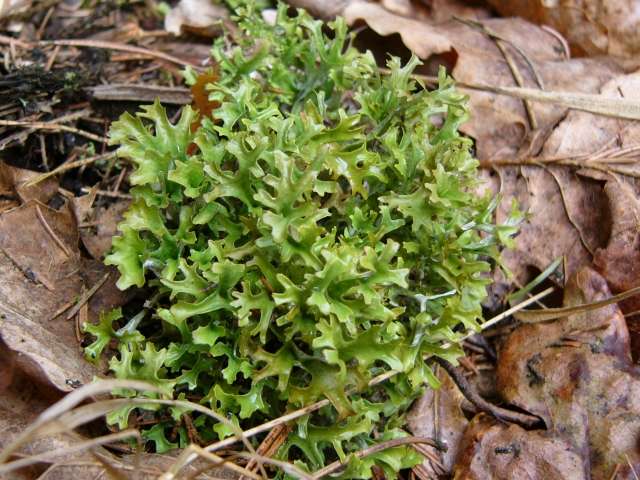
Synonyms/Latvian regional names: bîstu tēja (Mālmuiža, Lejasciema parish).
Iceland cetarium is one of the lichens that is widely used in medicine. Today, especially widely, although in Latvia, deer lichen was historically used more widely.
Icelandic cetaria has one great feature, it grows only in an ecologically clean environment. Like other representatives of lichens, it does not have pronounced roots, stems and leaves, and it feeds on the influence of the environment. In case of long-term drought, it can fall into anabiosis for up to three years.
With its durability, it has not for nothing attracted people, who already today consider it a valuable medicinal plant.
How to recognize?
Cetraria are easy to recognize because of their dark brown color. This species forms continuous stands on the ground, which can be seen as brown areas in the usually green or gray forest floor. There are 6 species of cetria in Latvia. The most common and well-known of them is Iceland cetraria, also called Iceland lichen.
Iceland cetraria (Cetraria islandica) or Icelandic lichen is about 6 cm high, its branch-like lobes up to 1 cm wide, dark brown, shiny, irregularly branched. Lichen forms thick "carpets". A very bitter but effective tea against colds is brewed from the cetarias of Iceland.
Important features for distinguishing the species are as follows:
- The lower side of the lobes is lighter than the upper side, with clearly visible white spots.
- 1 mm long cilia are visible on the edges of the lobes.
- The lower part of the lobes (near the ground) is slightly red.
The chemical composition
Chemically, Iceland cetarium is composed of carbohydrates and is based on lichenin, a starch-like substance with high nutritional value. Lichen contains a lot of rubber, proteins, waxes, resins, it also contains a small amount of fat and organic substances, which create antibacterial properties.
Polysaccharides (independent of lihrnin) which produce binding properties and tannins which impart astringent properties to the lichen have also been identified.
Like most lichens, Icelandic cetaria contains dozens of trace elements, among which are iron, iodine, titanium, copper, manganese and others. What was also strangely found is vitamin B12, which is normally found in the cells of "living" organisms that reside in the intestinal tract. Thanks to the presence of this vitamin, lichen activates immunity, helps in the processing of fats and proteins, and also improves the condition of the skin and hair.
Thanks to all this composition, Icelandic cetarium is considered one of the most medicinally useful among medicinal plants.
Medicinal significance
Pharmacological properties
In Iceland, where the valuable properties of Icelandic cetrarium were discovered for the first time, agriculture is not developed due to environmental conditions. Then this lichen was used as a food additive in baking bread. It was only in the 18th century that official medicine became interested in it, which discovered its powerful effect in the treatment of respiratory system diseases, even that lichen can help with tuberculosis.
This property of Icelandic cetrarium, like other medicinal lichens, is due to the presence of usnic acid. Usnic acid is an excellent antibiotic created by nature, which is capable of destroying a wide range of pathogenic microorganisms, including the causative agents of tuberculosis. And it is precisely the salts of this acid that are present in the preparations for the treatment of this dangerous disease.
Apart from the above, Iceland cetria is also used to treat:
- Whooping cough;
- Asthma;
- Colds;
- Bronchitis;
- Catarrh and angina;
- Pneumonia.
Over time, doctors discovered that Icelandic cetarium is also great for ulcers and gastritis, and due to the fact that lichen can accumulate iodine from the environment, it also helps with thyroid problems.
Application in folk medicine
The Eskimos and other peoples living in the far north have known about its powerful properties since ancient times. They use it not only as a decoction, but also apply it externally, in the form of compresses, to heal wounds, infections, burns and boils, but when taken orally, it improves appetite, cleanses the blood and fights all kinds of inflammation.
Icelandic cetrarium tea prevents the symptoms of toxicosis. Helps to absorb swelling in the chest, helps in the fight against vomiting and nausea. With the help of Icelandic cetrarium, the general state of immunity can be raised, and the result is observed already from the first time of use (in a person, strength returns). Northern peoples used it to treat toothache and stomatitis.
However, the positive effect of cetrarium did not end there, with its help it drives out intestinal parasites (which is why it is widely consumed by reindeer), treated insomnia, diarrhea and constipation, stimulated the gall bladder, and used it to make diapers for small children.